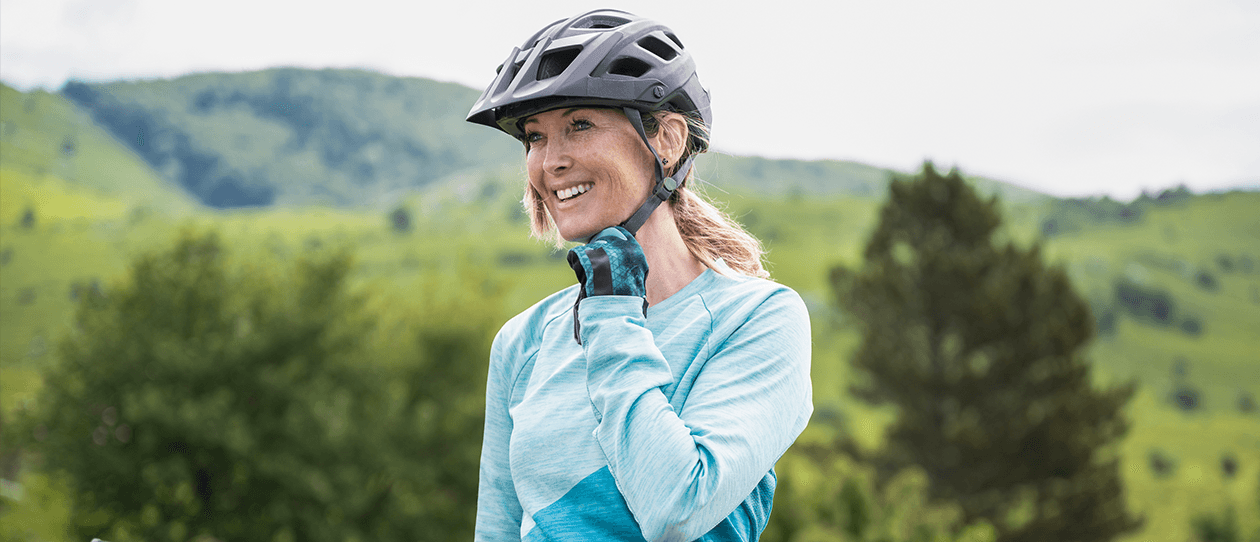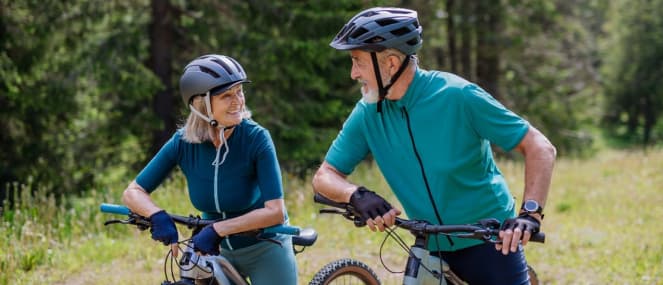
- Health hub/
- Tips & Advice on Improving your Energy Levels/
- The health benefits of cycling


When it comes to feeling good in both body and mind, few activities tick as many boxes as cycling. Whether it’s a gentle weekend ride or a regular part of your daily routine, hopping on a bike is a simple and sustainable way to improve your wellbeing — physically, mentally, and emotionally.
Small, consistent steps can make a big difference to overall wellbeing and cycling is one of the simplest ways to start. It’s a low-impact activity, suitable for a wide range of fitness levels, and easy to incorporate into everyday routines. Cycling also offers the added benefits of time outdoors, connection with nature, and opportunities to engage with the local community.
Let’s take a closer look at the many benefits cycling offers and why now might be the perfect time to get back on the bike.
1. A heart-healthy habit
Cycling is a form of aerobic exercise that strengthens your heart, lungs and circulation. It helps lower your risk of cardiovascular disease by improving blood pressure, increasing “good” cholesterol (HDL), and supporting healthy weight management.
Regular cycling has been shown to reduce the risk of heart disease and stroke, especially when paired with other healthy habits like a balanced diet and quality sleep.
2. Gentle on your joints
Unlike running or other high-impact sports, cycling is low-impact and easy on your joints. This makes it a great option for people of all ages, especially those managing knee or hip concerns or recovering from injury. It allows you to keep moving and building muscle strength without placing too much strain on your body.
Even a short, gentle ride can help loosen stiff joints and reduce discomfort associated with a sedentary lifestyle.
3. Mood and mental clarity
Feeling stressed, foggy or flat? Cycling may help lift your mood and clear your mind.
Exercise stimulates the release of feel-good chemicals like endorphins and serotonin, which can reduce stress and boost mental wellbeing. Being outdoors adds another layer of benefit. Fresh air, sunshine, and time in nature are all associated with reduced anxiety and better focus.
Cycling is also a great way to practice mindfulness. With every pedal stroke, you’re grounding yourself in the present moment; moving your body, syncing with your breath, and noticing your surroundings.
4. A social spin on fitness
Cycling doesn’t have to be a solo activity. Group rides or casual pedals with friends and family turn exercise into a social outing, boosting your motivation and strengthening your relationships at the same time.
If you're short on time, consider a family bike ride after dinner, or invite a friend for a Saturday spin followed by a healthy café breakfast.
5. Environmentally friendly and sustainable
Riding your bike instead of driving short distances is one of the simplest ways to reduce your environmental footprint. It’s a clean, green mode of transport that saves on fuel, lowers emissions and reduces traffic congestion.
Plus, you'll often arrive at your destination feeling more energised than if you’d been stuck in traffic or squeezed onto public transport.
You don’t need fancy gear or long rides to feel the benefits. Start small, a few minutes here and there and gradually build up. The key is consistency. If you're new to cycling or returning after a break, check in with your GP or healthcare provider to make sure it's right for you.
REFERENCES
https://www.heartfoundation.org.au/healthy-living/physical-activity/benefits-of-physical-activity
https://bicyclensw.org.au/benefits-of-cycling/
https://www.betterhealth.vic.gov.au/health/healthyliving/cycling-health-benefits




